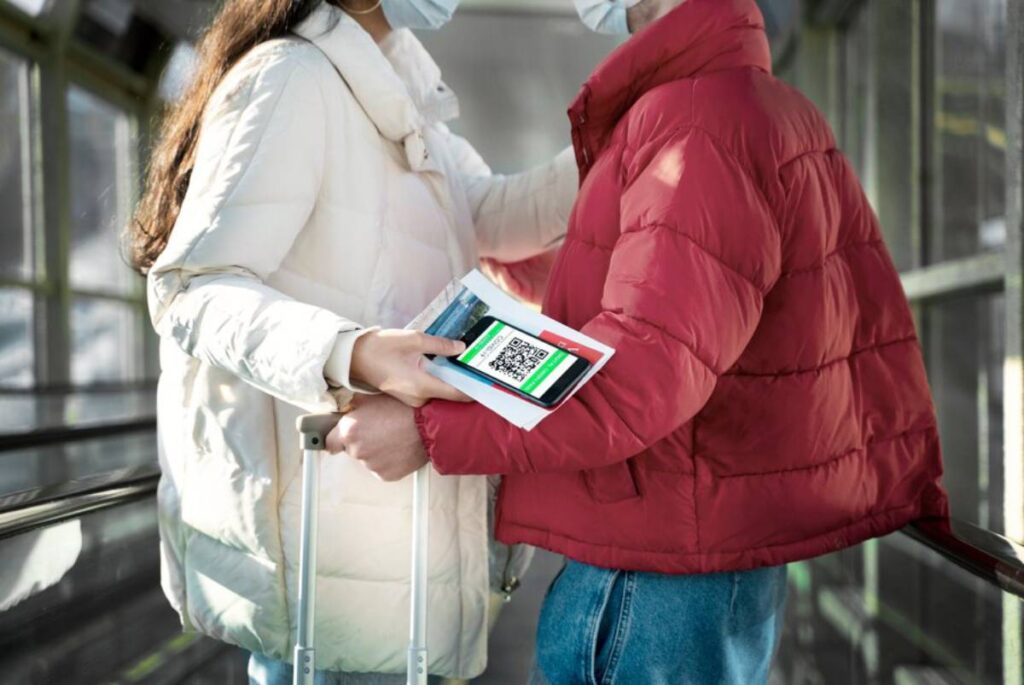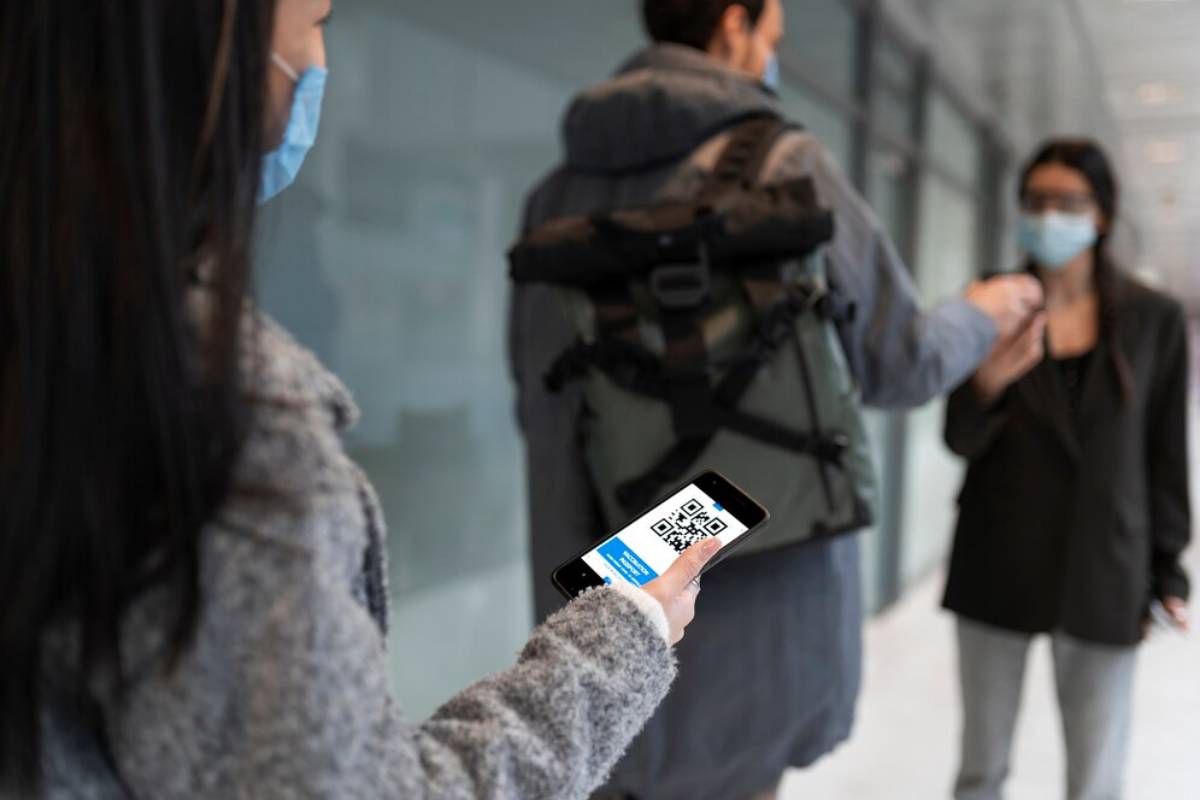The Travel Blog

The Future of Biometric Travel: Passport-Free Airports
Imagine walking into an airport, passing through security, and boarding your flight—all without ever showing your passport or boarding pass. This futuristic scenario is closer to reality than you might think. Biometric security is revolutionising airports, making seamless travel possible with just a glance or a fingerprint.
As airports worldwide embrace airport innovation, travellers can expect faster, safer, and more convenient journeys. But how does this technology work? What are its benefits and challenges? And what does the future of biometric travel look like? Let’s dive in and explore.
What is Biometric Travel?

Biometric travel puts your future in your hands. It uses advanced tech to verify who you are. This happens through unique biological markers like:
- Facial recognition
- Fingerprint scanning
- Iris recognition
These smart identifiers make traditional travel documents, like passports and boarding passes, outdated. They change the journey from hard to easy. Passengers smoothly move through security, immigration, and boarding gates. They don’t need to show physical papers at all.
How Does Biometric Security Work in Airports?
Biometric security harnesses the power of unique characteristics to create a seamless travel experience. Here’s how this remarkable process typically unfolds:
1. Enrollment and Data Collection
Travellers supply biometric data, such as facial images or fingerprints, during the initial signup. This precious data is securely stored and linked to each passenger’s profile, like a digital passport.
2. Verification at Checkpoints
As passengers traverse the airport, biometric scanners swing into action, comparing their features against the securely stored data. If the system finds a match, it swiftly verifies identity, allowing for unhindered passage.
3. Seamless Boarding and Immigration
Wave goodbye to lengthy identity checks! Biometric technology eliminates the old-school hassles, with scanners working their magic at security, immigration, and boarding gates to instantly confirm identities. This major upgrade slashed wait times in half.
The Benefits of Biometric Travel
1. Faster and Seamless Travel Experience
No more fumbling around for passports or boarding passes! Biometric technology turbocharges identity verification, letting passengers zoom through checkpoints. This minimises congestion, delighting everyone with swifter, less stressful air travel.
2. Enhanced Security and Accuracy
Biometric systems boast unmatched accuracy, drastically reducing identity fraud risk. Since our biological features are as unique as a fingerprints, verification through these methods offers a superior layer of security compared to traditional techniques.
3. Reduced Human Error
Manual checks can lead to blunders, like a clumsy game of “Spot the Difference.” Luckily, biometric systems eliminate human error, ensuring precision and reliability in the verification process.
4. Improved Passenger Convenience
Biometric security makes travel a breeze. A simple facial scan or fingerprint allows easy navigation throughout the airport, negating the necessity of presenting documents at every turn.
The Future of Passport-Free Airports
1. Widespread Adoption of Biometric Security
With technology becoming more accessible, airports worldwide are likely to embrace biometric systems. Soon, passport-free airports might not just be a dream but rather the norm.
2. Integration with Digital Identities
Digital identities are set to pave the way for seamless travel. Governments and airlines are looking into blockchain digital IDs. This could boost security and make things easier for users.
3. AI-Powered Personalization
AI is set to enhance biometric systems. It will predict what passengers want and suggest the best routes. AI-driven platforms will take streamlining journeys to the next level.
Biometric Innovations Transforming Airports
1. Facial Recognition Technology
Facial recognition leads the charge as the most prominent biometric technology in airports around the globe. It captures a traveller’s face, comparing it to the stored data in seconds—talk about instant gratification!
Popular Applications:
- Self-Check-In Kiosks – Passengers can easily check-in and print boarding passes with a mere glance.
- Automated Boarding Gates – Facial scans fast-track the boarding process by verifying identities in a snap.
- Immigration Clearance – Facial recognition simplifies immigration checks, dramatically slashing queues and wait times.
2. Fingerprint and Iris Scanning
While facial recognition steals the spotlight, fingerprint and iris scanning prove their worth. These techniques boost security. When combined with facial recognition, they create harmony and enhance accuracy.
Where It’s Used:
- Frequent Flyer Programs – Connect fingerprint or iris data to loyalty programs. This will speed up check-ins.
- High-Security Areas – These methods keep restricted zones extra secure within airports.
3. E-Gates and Smart Kiosks
E-Gates and smart kiosks with biometric scanners help passengers move quickly through security and immigration. These self-service marvels elevate operational efficiency while enhancing the overall traveller experience.
Countries Leading the Way in Biometric Travel
1. United States
The U.S. is a trailblazer in implementing biometric security at major airports. Programs like CBP’s Biometric Exit utilise facial recognition to verify departing travellers. Major airports like JFK, LAX, and Orlando International are using biometric screening at boarding gates.
2. United Kingdom
Heathrow Airport in London uses facial recognition for quick boarding. This tech cuts down processing times a lot. The UK government is expanding biometric programs at major airports. This aims to improve security and efficiency.
3. Singapore
Singapore’s Changi Airport leads in airport innovation. It uses facial recognition for a paperless journey from check-in to boarding. Their FAST system uses biometrics at key points. This makes passenger flow easy and smooth.
4. United Arab Emirates (UAE)
Dubai International Airport leads with Smart Gates. Registered passengers can quickly pass through immigration using facial recognition or fingerprint scanning.
The Challenges and Concerns of Biometric Travel
1. Privacy and Data Security
A major concern about biometric travel is the privacy and safety of sensitive data. Storing and processing this information raises pressing questions about data usage and security.
2. Potential for Misuse
As biometric data gains traction, the risk of misuse looms larger. Robust cybersecurity measures and strict regulations are essential to prevent potential transgressions.
3. Accuracy and Bias Issues
Despite high accuracy, biometric systems aren’t infallible. Errors in facial recognition can surface, particularly among individuals with diverse ethnic backgrounds. Addressing inclusivity and precision remains an urgent challenge.
Will Passports Become Obsolete?

Biometric technology makes passports less important, but they aren’t going away soon. Passports might change to digital formats on mobile devices. This would let people verify their identity easily using biometrics.
Preparing for a Biometric Travel Future
1. Register for Biometric Programs
Travellers can enrol in trusted programs using biometric verification, such as:
- Global Entry (USA)
- CLEAR (USA)
- Smart Gates (UAE)
2. Stay Informed About Data Privacy
Understand how your biometric data is gathered and stored. Opt for programs and airports that prioritise data security and transparency.
3. Embrace Contactless Travel
Contactless travel is swiftly becoming the norm. Familiarise yourself with biometric systems and relish faster, safer, and more efficient journeys.
Conclusion: A New Era of Seamless Travel
Biometric security changes airports into passport-free zones. This makes travel faster, safer, and more convenient. Airport innovation is changing fast. Soon, travellers will enjoy easy and smooth identity checks.
Artificial intelligence is set to enhance biometric systems. It will predict what passengers want and suggest the best routes. Technology and regulations will make biometric travel safe and trusted despite privacy concerns and security challenges. Whether you fly often or just sometimes, using biometric technology can make your trips easier and more enjoyable.
Welcome to the future of seamless travel—where the world is just a scan away!









